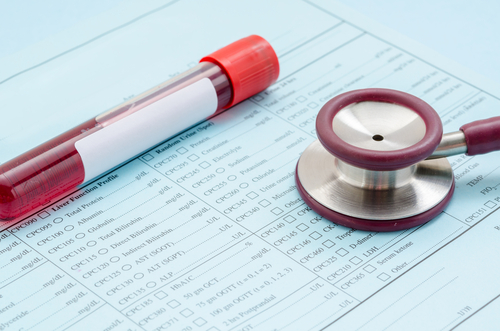New Test May Help Determine Disease Activity in GPA Patients, Study Reports

A new test measuring the relative abundance of immunoglobulin G4 (IgG4) RNA could be an indicator of granulomatosis with polyangiitis (GPA) activity and distinguish active disease from remission, a study suggests.
The study, “IgG4:IgG RNA ratio differentiates active disease from remission in granulomatosis with polyangiitis: a new disease activity marker? A cross-sectional and longitudinal study,” was published in Arthritis Research & Therapy.
ANCA vasculitis is an autoimmune disease where patients produce self-antibodies — called anti-neutrophil cytoplasmic autoantibodies, or ANCAs — against a type of immune cells called neutrophils.
GPA is a subtype of ANCA vasculitis in which masses of immune cells accumulate and damage small- and medium-size blood vessels.
GPA normally has periods of active disease followed by periods of remission. Long-term symptoms and treatment with immunosuppressants can lead to secondary conditions that reduce the quality of life. Therefore, it is important to clearly identify disease activity to optimize treatment.
Currently, there are no specific molecules that indicate GPA disease activity, so doctors use general parameters of inflammation, which are not very reliable and cannot determine if the symptoms are due to vasculitis or other factors such as infections.
In addition, the presence of ANCAs is specific to ANCA vasculitis, but these are better for diagnosing the condition than to indicate its activity.
B-cells — cells that produce ANCAs and other antibodies — that express a molecule called immunoglobulin G4 (IgG4) are present at higher levels when GPA develops and therefore could indicate disease activity. However, the level of IgG4 in the serum does not seem to be a specific biomarker.
To create a more effective indicator, researchers used a technique called quantitative PCR (qPCR) that allowed them to measure the relative abundance of the RNA that holds the instructions to produce IgG4, among the RNA of all immunoglobulins present in the serum.
They compared the qPCR score with a commonly used measure of disease activity, known as the Birmingham Vasculitis Activity Score (BVAS).
The study included 35 GPA patients, with a median age 56 years. According to the BVAS, 15 patients had active disease, three had low disease activity, and 17 were in remission.
Patients with active GPA had higher qPCR scores than patients in remission. The qPCR scores corresponded better to the BVAS than other parameters such as the amount of ANCAs and total IgG4 in serum.
GPA patients also had significantly higher scores than those with other autoimmune diseases where B-cells are involved, such as systemic lupus erythematosus and rheumatoid arthritis. This suggested that relative IgG4 abundance might be a specific biomarker for GPA.
Furthermore, the qPCR scores varied when measured in the same patients at different points of disease activity. Additionally, the scores were higher only if symptoms were caused by GPA and not by confounding factors such as infections.
“We report that the IgG4:IgG RNA ratio as measured by a qPCR test might be a new and promising disease activity marker in GPA. The qPCR test is able to accurately distinguish disease activity from remission/[low disease activity] and outperforms frequently used disease activity parameters in GPA,” the researchers said.
Since the sample size of this study was small, more studies are needed to fully validate the biomarker. However, the researchers concluded that “if the present results are confirmed, it will help to optimize treatment, thus preventing morbidity and mortality from under- and overtreatment.”






